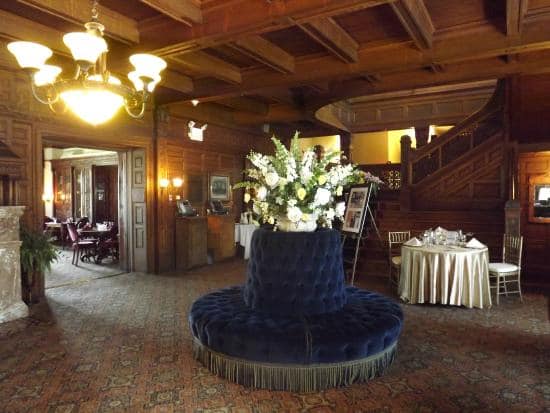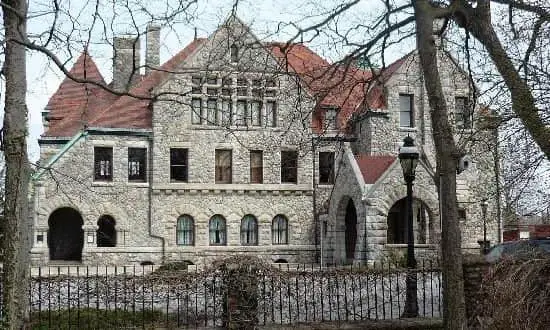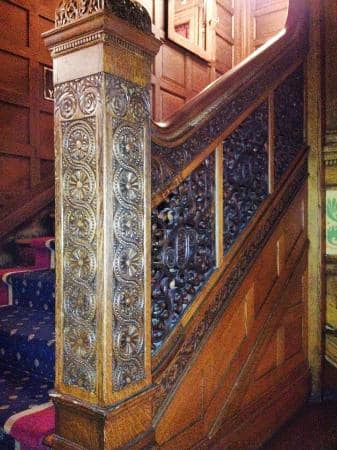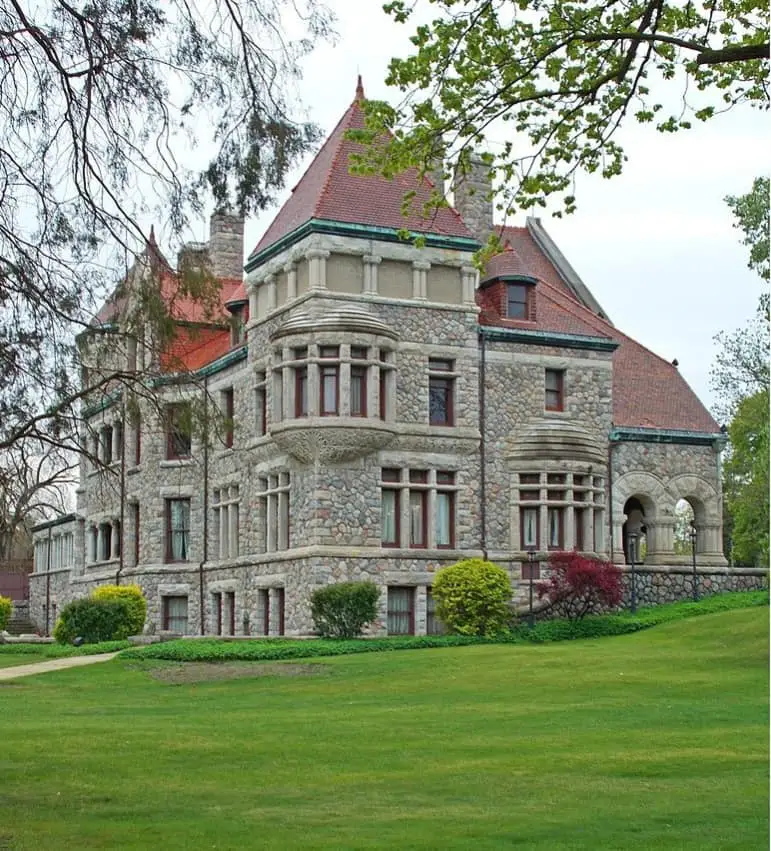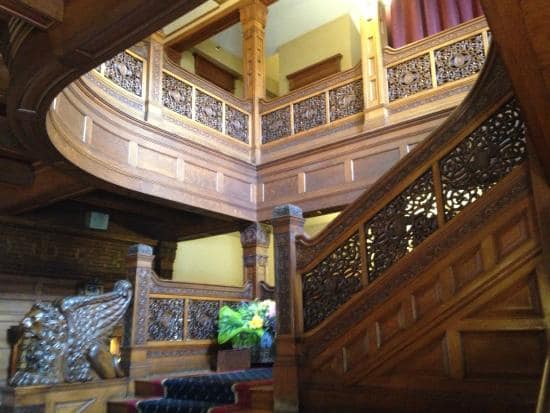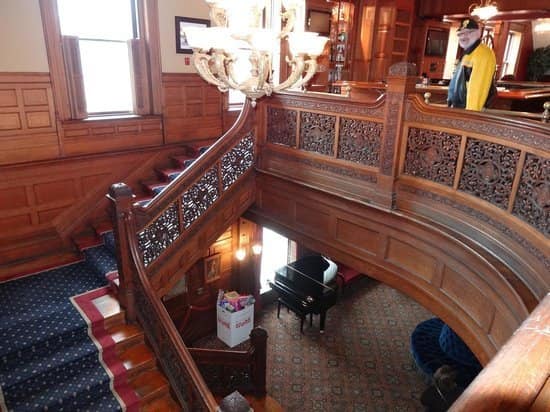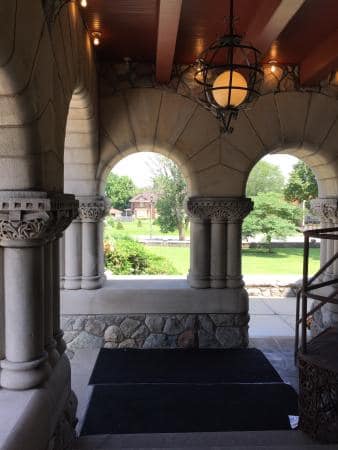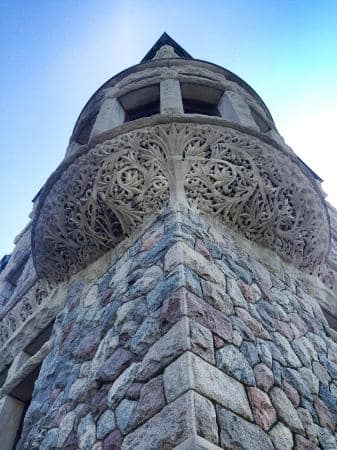Nestled in the heart of South Bend, Indiana, the Studebaker Mansion, famously known as Tippecanoe Place, stands as a towering tribute to America’s industrial age and architectural innovation. Built between 1886 and 1889, this mansion is a rare residential example of Richardsonian Romanesque architecture, boasting a dramatic stone façade, towering chimneys, and an iconic roofline. But Tippecanoe Place is more than just bricks and stone—it’s the story of a family that revolutionized American transportation.
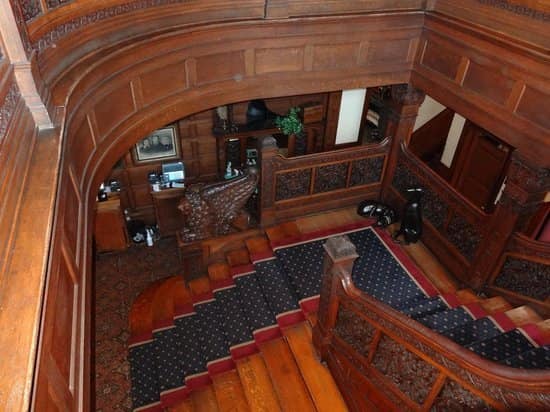
The Vision of Clement Studebaker
Tippecanoe Place was commissioned by Clement “Clem” Studebaker, co-founder and long-time president of the Studebaker Brothers Manufacturing Company. Clem led the company for an impressive 33 years, during which it rose to become the largest manufacturer of horse-drawn vehicles in the world.
Under his leadership, the company was not only a titan of the carriage industry but also a pioneer in self-propelled vehicles, eventually evolving into the famous Studebaker automobile brand. Tippecanoe Place—named after the Battle of Tippecanoe in the War of 1812—served as both a personal residence and a powerful symbol of the family’s industrial legacy.
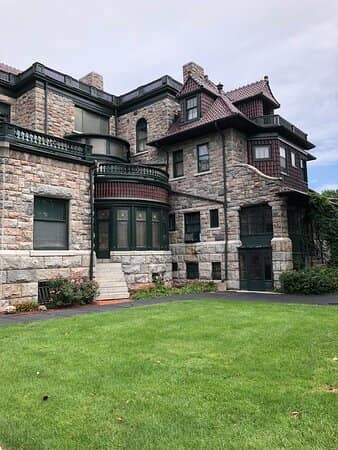
Architectural Masterpiece by Henry Ives Cobb
The mansion reflects the bold and influential style of Henry Ives Cobb, a renowned Chicago architect. This 26,000-square-foot stone structure features:
- Forty rooms arranged in an irregular floor plan
- Six large chimneys
- Multiple towers, turrets, and steep gables
- A roofline that varies in elevation and form
The architectural style—Richardsonian Romanesque—is marked by massive stone construction, rounded arches, and a fortress-like presence, making the home one of the few private residences in the Midwest to embody this design on such a grand scale.
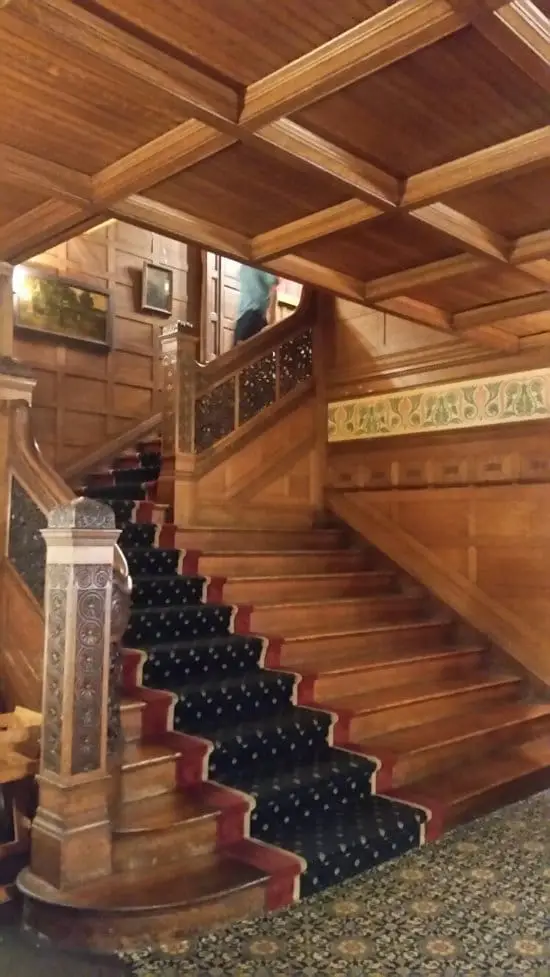
A Family Home with a Storied Past
Clem and his wife Anna Studebaker made Tippecanoe Place their family home in 1889. They lived there until Clem’s death in 1901. Afterward, the mansion continued to be inhabited by Studebaker family members until 1933, when the company faced financial hardship and ultimately declared bankruptcy.
Following the family’s departure, Tippecanoe Place transitioned through a variety of significant roles, each adding to its rich legacy.
World War II and Philanthropy
During World War II, the mansion served a new purpose as the local Red Cross headquarters, supporting war efforts and community health. In 1947, local philanthropist E.M. Morris purchased the property and generously donated it to the city to be used as a school for handicapped children, extending the home’s impact from industrial legacy to community service.
Preservation and Restoration Efforts
In 1970, stewardship of the mansion was transferred to Southold Restorations, an organization committed to preserving local heritage. Then, in 1979, the property was sold to Continental Restaurant Systems, who undertook a complete restoration.
By 1980, the mansion had been transformed into a high-end dining establishment. The stunning restoration respected the home’s original architecture while adapting it for commercial use.
A New Era: Tippecanoe Place – Studebaker Grill
In 2008, the Matteoni Family took over operations of the restaurant housed inside the mansion. Renamed Tippecanoe Place – Studebaker Grill, the venue now welcomes guests not only to dine but to experience a piece of living history.
The restaurant continues to be a cultural and culinary landmark in South Bend, combining fine dining with immersive historic ambiance.
National Recognition
Tippecanoe Place’s significance has been recognized at the highest levels:
- Listed on the National Register of Historic Places in 1973
- Designated a National Historic Landmark in 1977
These honors celebrate the mansion not just for its architecture but for its enduring connection to American innovation, civic service, and architectural heritage.
Conclusion: A Timeless Landmark
Today, Tippecanoe Place remains a majestic reminder of a bygone era—a time of boundless invention, elegant design, and powerful family legacies. From horse-drawn carriages to handcrafted meals, the mansion has evolved with grace and dignity. Whether you’re exploring South Bend’s history or enjoying a meal at the Studebaker Grill, Tippecanoe Place offers a timeless window into America’s industrious heart.
